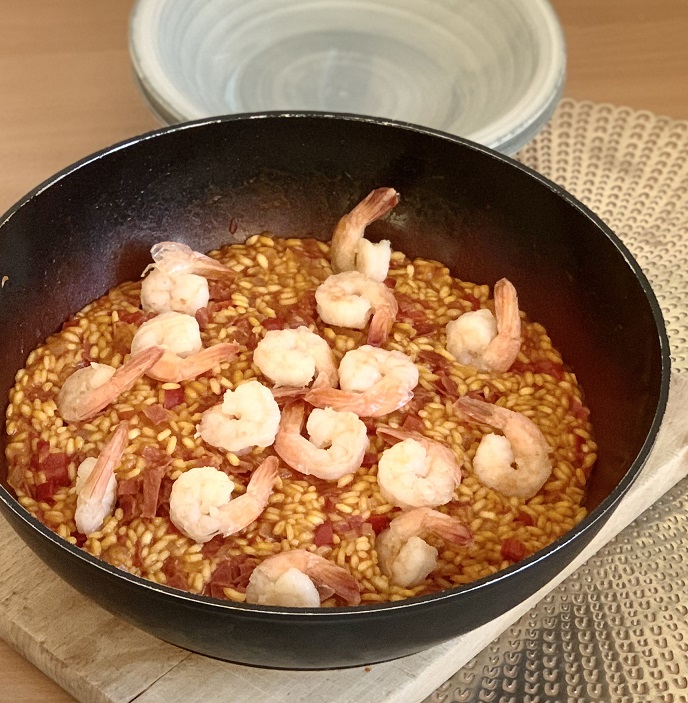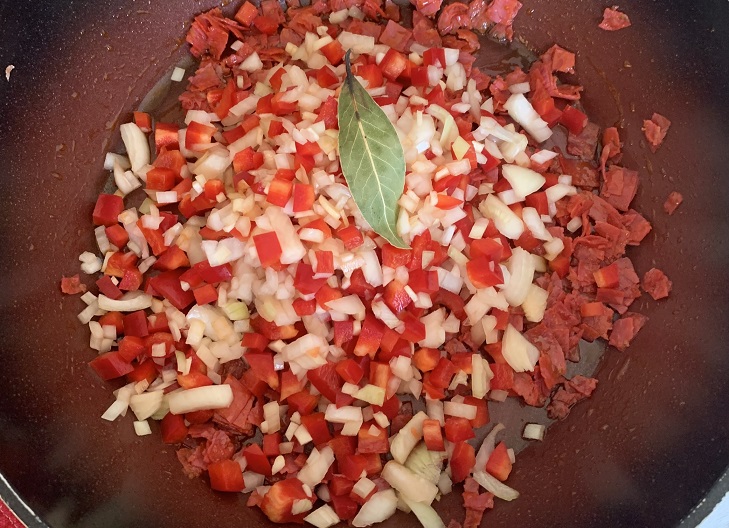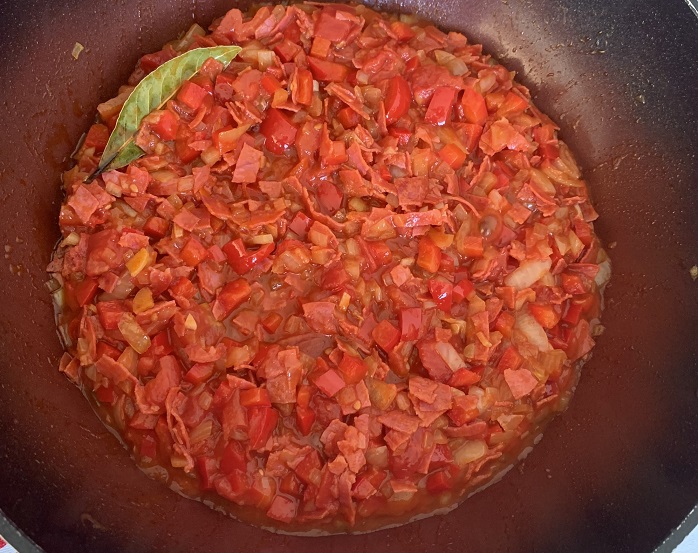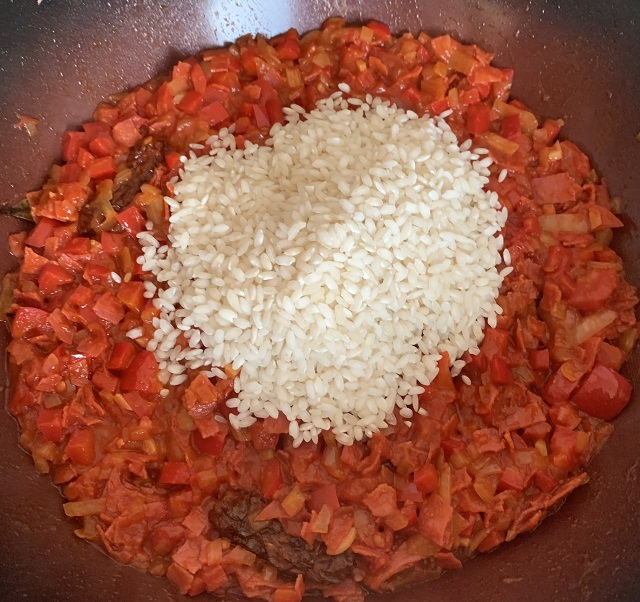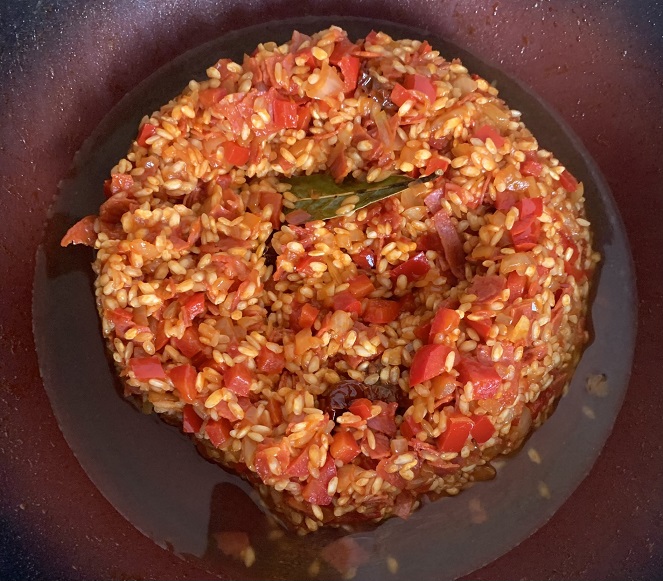Paella de marisco is translated from Spanish as “seafood paella”. Experience vibrant flavours of Spain, admired by both local citizens as well as millions of tourists. No need to travel though since you can easily prepare the meal at home, combining the most common ingredients such as seafood, rice or tomatoes. Get inspired today with Hana’s Recipes!
More about paella and its different types
- Paella valenciana: As indicated from the name, paella valenciana comes from the region of Valencia. It traditionally combines chicken, rabbit and sometimes snails, together with green beans, garrofó (a type of large white bean) and tomatoes. You may season the paella with rosemary, saffron, even artichokes.
- Seafood paella (Paella de marisco): The substitution of meat with different kinds of seafood (shrimp, mussels, clams or squid) is mainly popular in coastal areas. The rich broth of paella, enhanced with saffron as well as tomatoes, allows the chosen seafood to bring exquisite taste to the rice. To make the taste even stronger, do not be afraid to add lemon and fresh parsley at the end.
- Mixed paella (Paella mixta): Such a type is a combination of both meat and seafood. The most common ingredients include chicken, rabbit, shrimp, mussels and chorizo salami, a very popular Spanish addition. Specifically paella mixta is a highly flexible type, primarily in terms of vegetables. Therefore, peppers or peas may be utilised as well. It always depends on your preference and cravings at the moment of preparation of the meal.
- Black paella (Arroz negro): Black paella can be distinguished from other types due to its significantly dark colour, coming directly from the squid or cuttlefish ink. Except for these, prawns may be included in the meal too. They all provide rich, savoury flavours, also thanks to a typical serving – aioli coming alongside the paella and known as a garlic mayonnaise.
- Vegetarian paella (Paella de verduras): Nowadays, when the number of vegetarians is rising, there is also an option to make the paella vegetarian. It has become quite popular, as it combines a variety of fresh vegetables like artichokes, peppers, peas, green beans and, obviously, tomatoes. Similarly to previous paella types, vegetarian one is also seasoned with saffron and herbs, properly highlighting the natural flavours of added vegetables.
Paella de marisco: Ingredients
- 80 g of chorizo salami,
- 16-18 shrimp pieces,
- 100 g of chicken breasts (or boneless upper thighs),
- 2 tbsp of olive oil,
- 1 bay leaf,
- 1 onion,
- 3 cloves of garlic,
- 1 piece of red pepper (yellow or green can also be used),
- 3 dried tomatoes,
- 100 ml of white wine,
- 50 g of tomatoes from a can (cubes),
- 500 ml of chicken broth,
- 150 g of arborio rice,
- A pinch of saffron
Paella de marisco: Preparation of the Spanish classic
1
Firstly, finely chop the onion, garlic and pepper. If you want to add shrimps, fry them separately in a pan with olive oil until they catch colour (about 5 minutes). Clean the meat and cut it into small pieces. Cut the chorizo in a similar way and start frying it in olive oil.
2
When the colour and fat from the chorizo salami are released, add the meat to it and continue frying. After that, throw in a bay leaf and the chopped onion, garlic and pepper. Saute together for about 3 minutes.
3
Next, add 3 pieces of dried tomatoes (you can use the whole ones) in order to enhance the overall taste of the paella de marisco.
4
Add rice and fry for the next 4-5 minutes, stirring constantly.
5
Pour in the white wine. Let the wine evaporate to half of its original amount.
6
After it is done, pour in the heated broth over everything. Stir and reduce the temperature to a lower level. Slowly simmer uncovered for 45 minutes.
And that should be it! Perhaps a little harder compared to our previous photo recipes, but certainly rewarding! Enjoy your paella de marisco and remember that you can easily prepare it now whenever you feel like it!
Leftovers from rice and chicken? Hana’s Recipes has two delicious solutions for you where both can be utilised: Chicken tikka masala and pineeapple curry, which may be easily prepped for the whole week.
Paella de marisco: Videorecipe to master the Spanish cuisine symbol
FAQ: Is it necessary to always use saffron in paella de marisco?
Saffron is traditionally used within Spanish paellas. It gives them the distinctive flavour and colour people admire the meal for. However, as we tend to emphasise for almost all recipes, meals should be adjusted to your general preference and to what you are craving at the moment of preparation. Therefore, if you don’t have any saffron at home or you wish to replace it with something else, you can use turmeric. Just be aware that the overall taste will be different.

